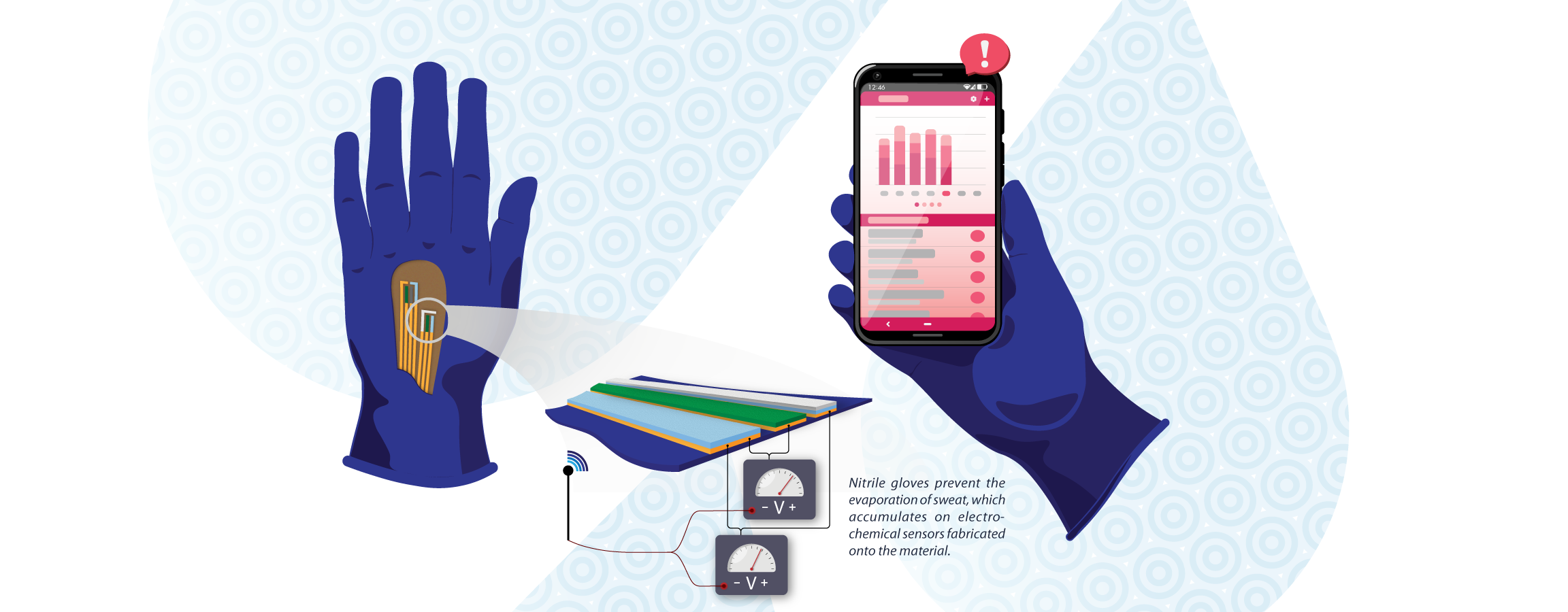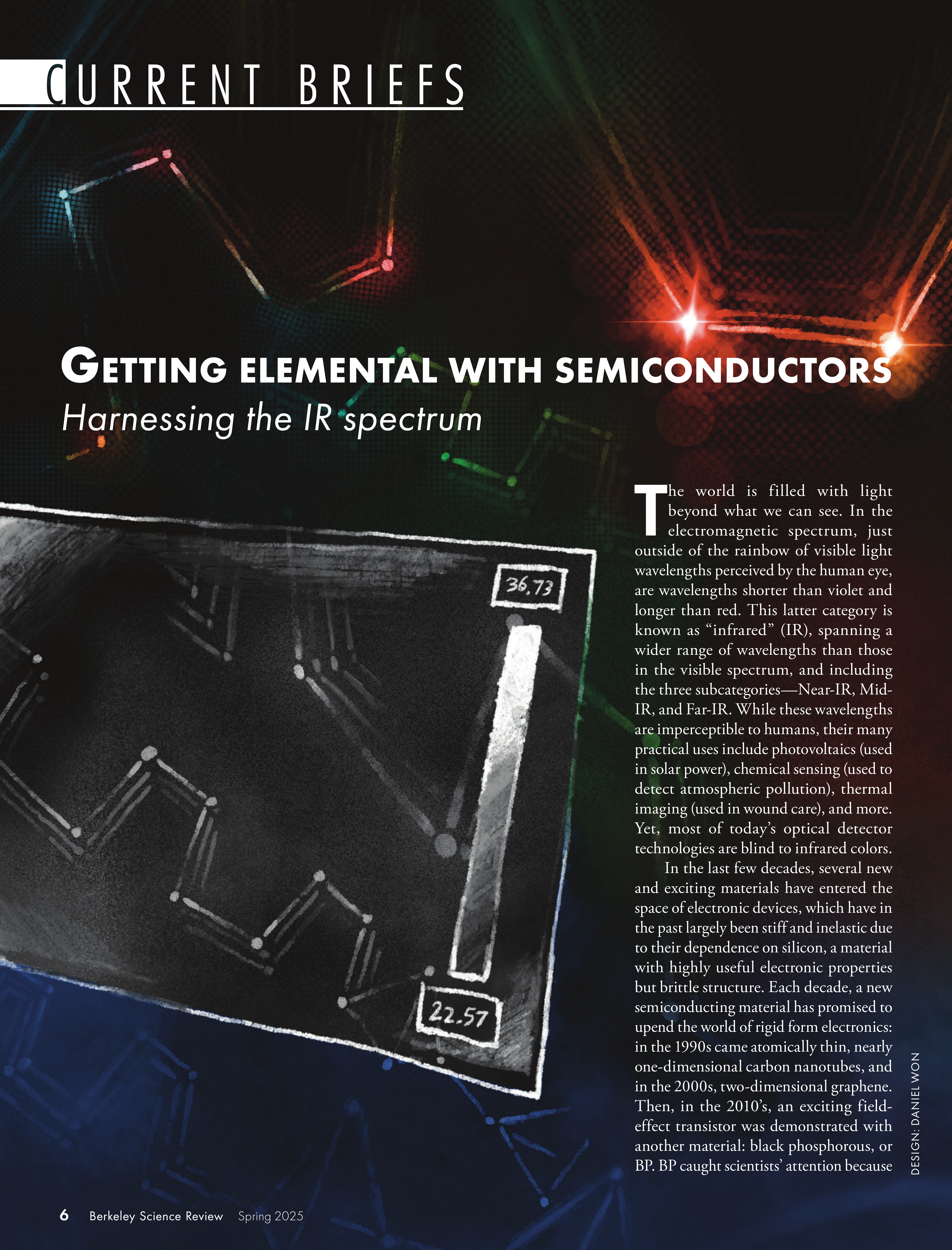Making sense of a sweaty mess
Your next wearable may feature sweat tracking

Wearable technologies provide quick and continuous assessments of our health. But in many ways, current wearables such as a Fitbit or an Apple Watch barely scratch the surface of the wealth of information about what’s going on inside our bodies. Ali Javey, professor of electrical engineering and computer sciences at UC Berkeley, is betting that sweat will be a key player when it comes to making the next generation of wearables.
Sweat gets a lot of recognition for keeping us cool on sweltering summer days, but its role in maintaining chemical balance within the body is often overlooked. For example, sweat carries away heavy metals, proteins, hormones, and other substances, such as drugs and alcohol. Although blood is still the gold standard for many health tests, sweat poses an attractive alternative. The process of collecting sweat is non-invasive and, as a result, sweat can be collected frequently over time. The increased frequency of collection provides a cumulative reading of an individual’s health rather than a snapshot of information that is presented by typical lab tests.
Historically, sweat sensing required large collection volumes, physical exertion, and expensive equipment. Sweat was induced either through exercise or by a process known as iontophoresis, where skin is stimulated with a tiny electrical current. Both approaches have drawbacks: some patients complain about the sting of iontophoresis, and exercise tends to knock sweat composition out of its typical balance. These limitations, in addition to the limited research around sweat-based health monitoring, placed much of the initial attention on blood testing.
Recent progress from the Javey lab, however, has greatly improved sweat collection techniques and sensor manufacturing processes. Researchers were able to fit their sweat sensor fabrication into the pipeline of an established process called roll-to-roll printing, which offers inexpensive and easily customizable production. They have also circumvented the need for stimulating sweat by exercise or iontophoresis. Graduate student researcher Mallika Bariya explains, “It turns out we are almost always sweating. The catch is that it is at low volumes, and it tends to evaporate at a fast pace.” Bariya continues, “By using gloves to stop the evaporation, we can very quickly accumulate enough sweat to get a meaningful reading.” In other words, using the Javey lab’s new wearables, the sweat doesn't need to be prodded, just trapped.
One of the advantages of non-invasive continuous sweat sensing is the ability to manage medication levels. Levodopa is a drug used to treat Parkinson’s disease. The optimal dosage of levodopa varies from patient to patient; too much or too little can lead to undesirable swings in an individual’s motor and cognitive abilities. Currently, physicians make dosage adjustments based on a visual check of a patient’s motor abilities, but new technology from the Javey lab may one day put a quantitative measurement to this otherwise subjective process. Interestingly, levodopa is detected in the sweat of patients taking the drug, and as a result, levodopa levels can be quantitatively measured with sweat sensors. The sensor itself is a small patch containing metals that produce an electrical current after reacting to levodopa in sweat. The current gets translated into a concentration and shared to a patient’s phone, providing real-time readings of levodopa levels. This level of detail offers a sneak peek into the future of personalized medicine where treatments are tailored to an individual. In addition, sweat sensors may assist in the discovery of novel biomarkers, which are molecules indicative of disease or infection. Identifying meaningful sweat-residing biomarkers whose levels correlate with disease severity could ultimately improve disease diagnosis, prevention, and treatment.
For now, the range of known applications for sweat sensing is rather narrow because little research has gone towards devising sweat-based health tests. The Javey lab is excited to open the floodgates of sweat’s potential with their sweat-sensing wearables. With the newfound ability to acquire lots of sweat data, researchers are optimistic that sweat sensing will grow both in popularity and utility, and that streamlining sweat collection and sensor manufacturing will make it easier for other researchers to develop new diagnostic tests. Who knows? Maybe one day the sweat that gets trapped underneath your watch will be a feature rather than a smelly annoyance.
----- Vincent Su is a graduate student in physics.
This article is part of the Spring 2021 issue.





